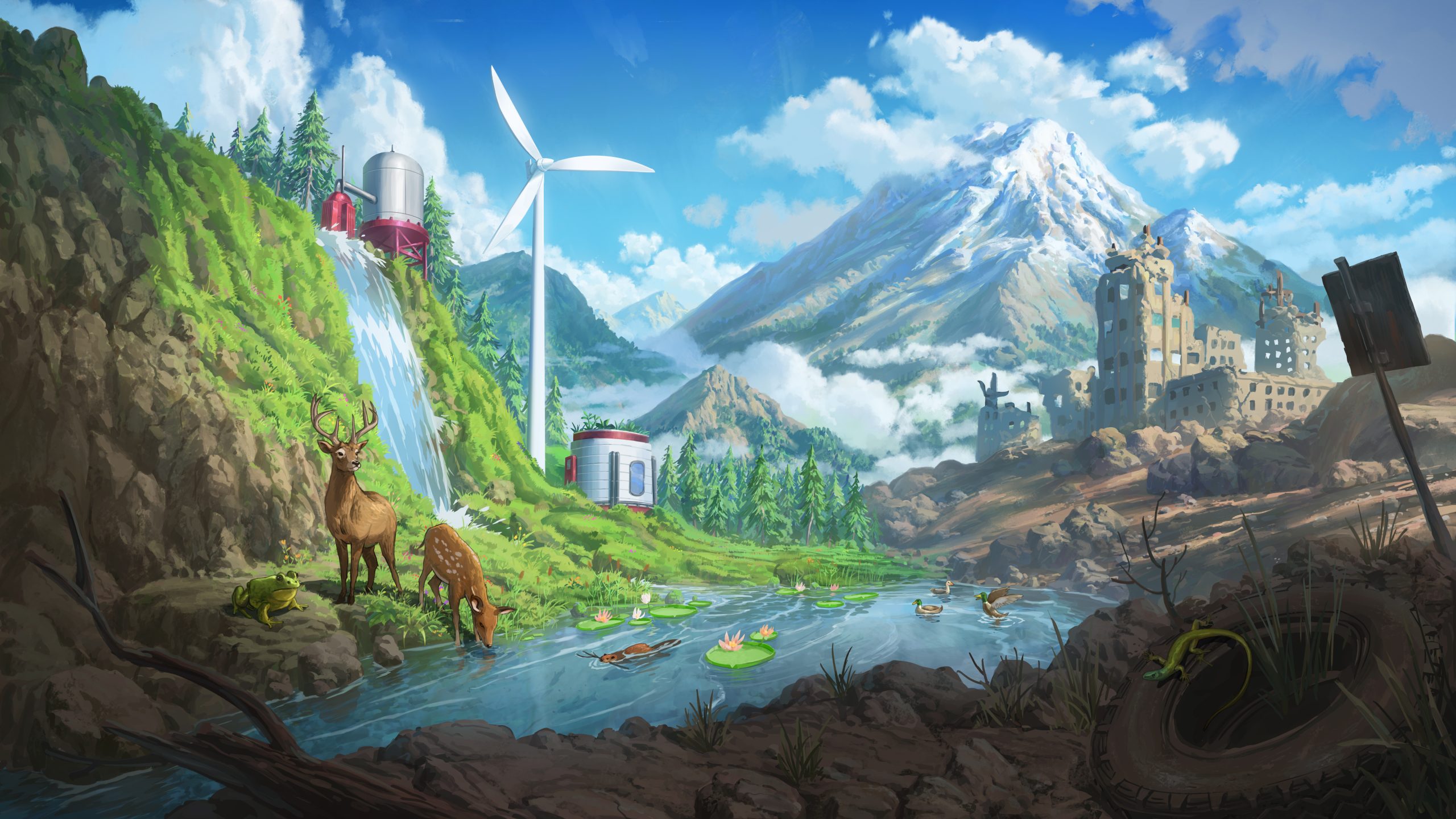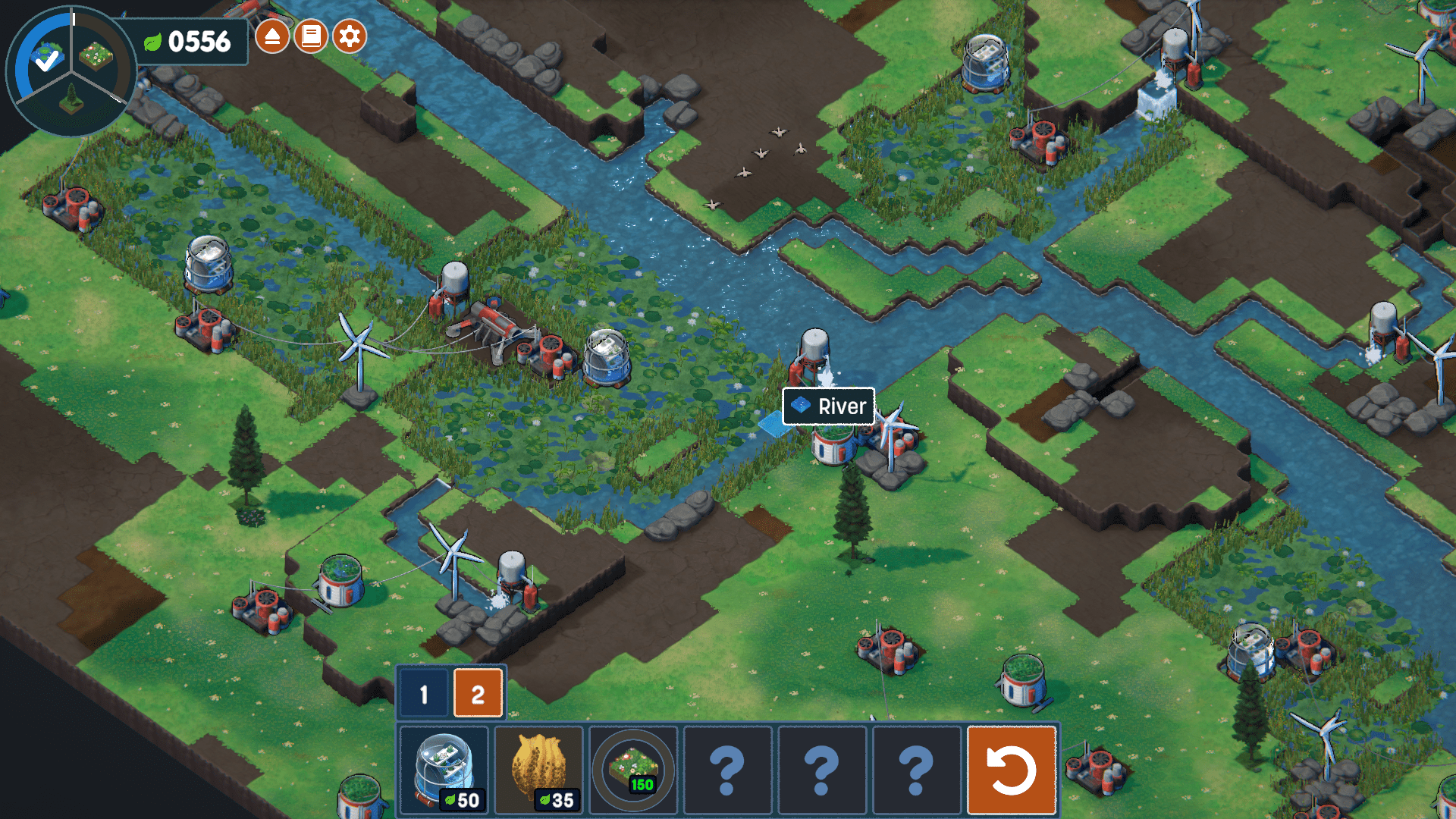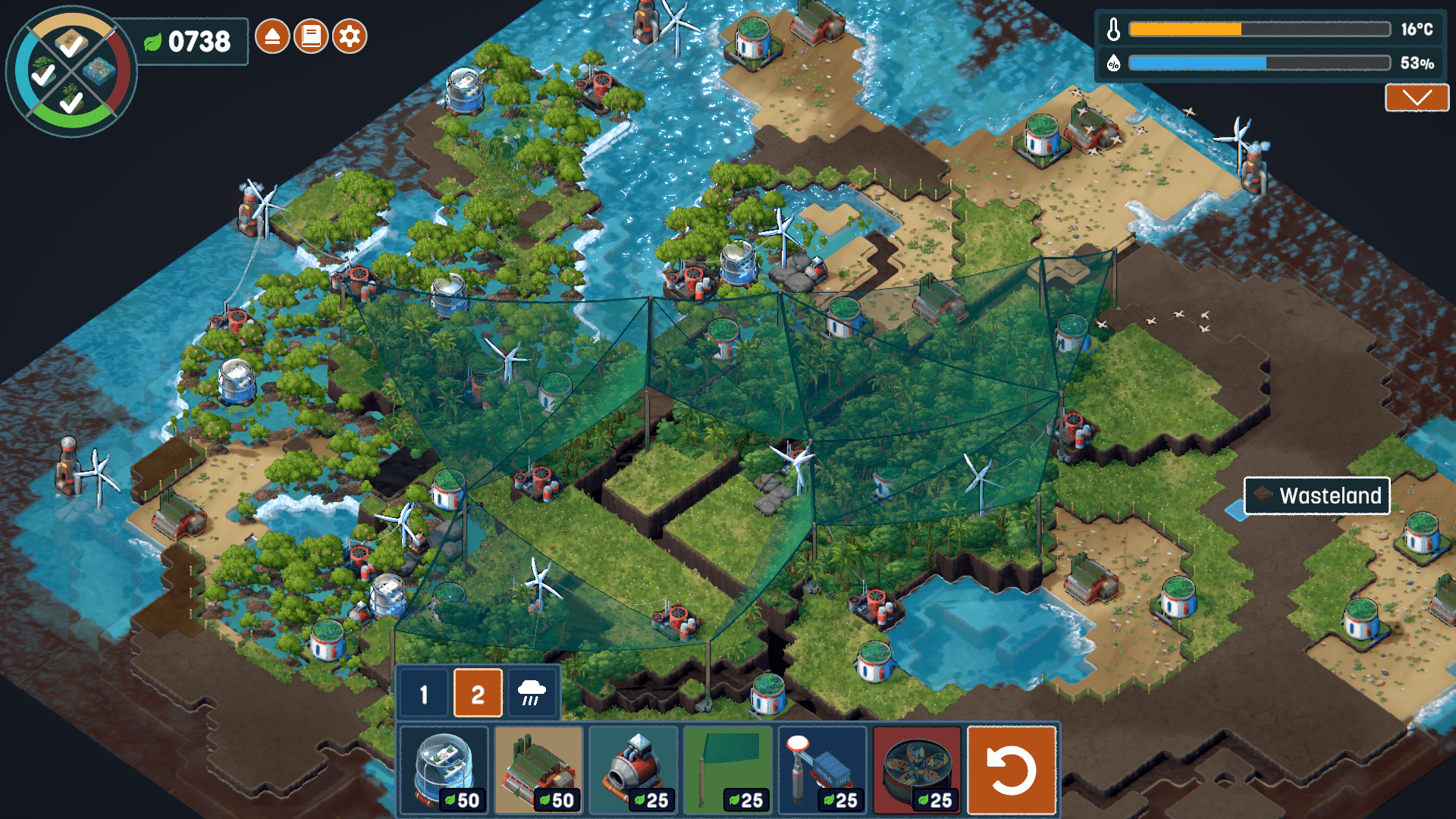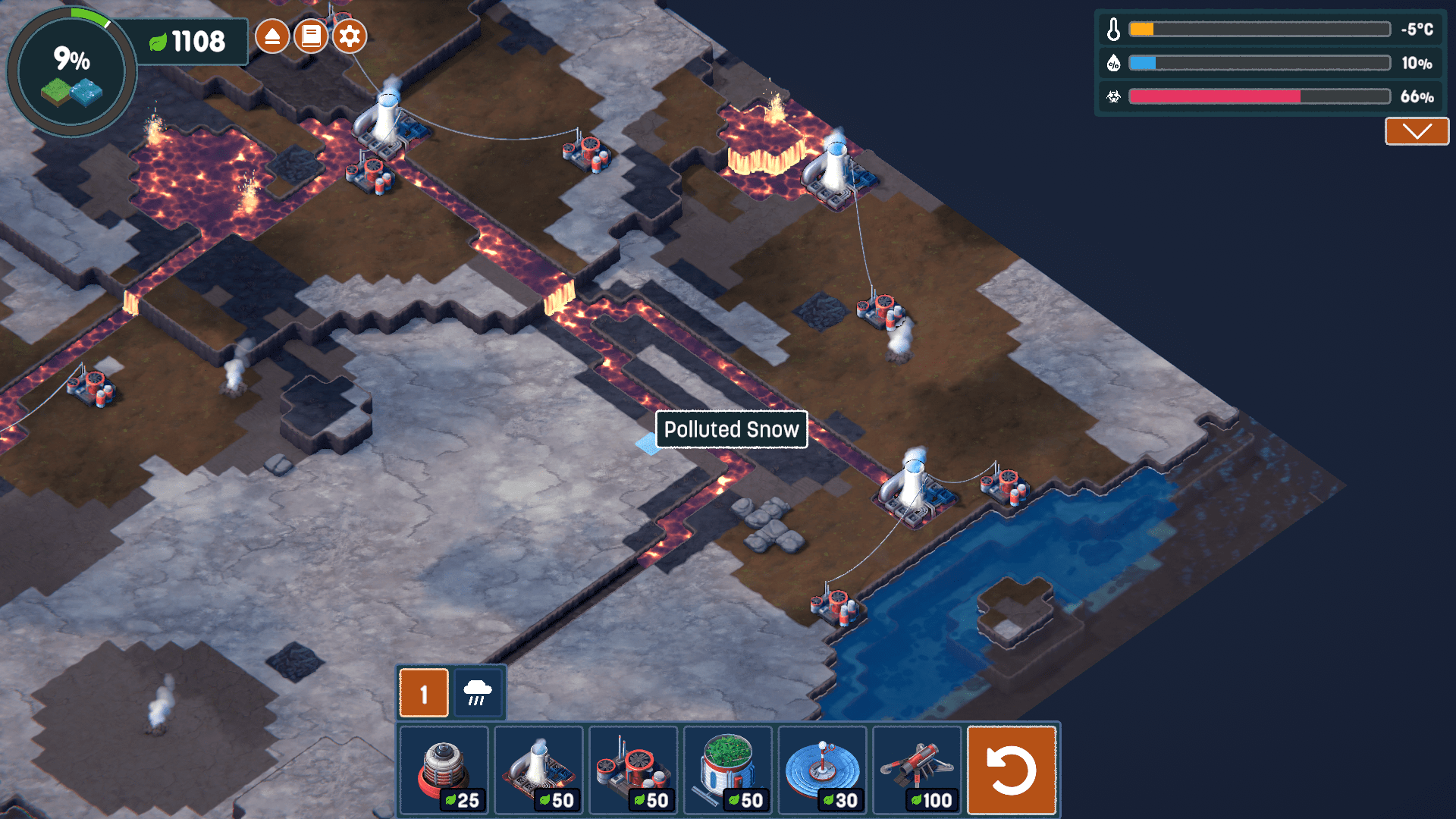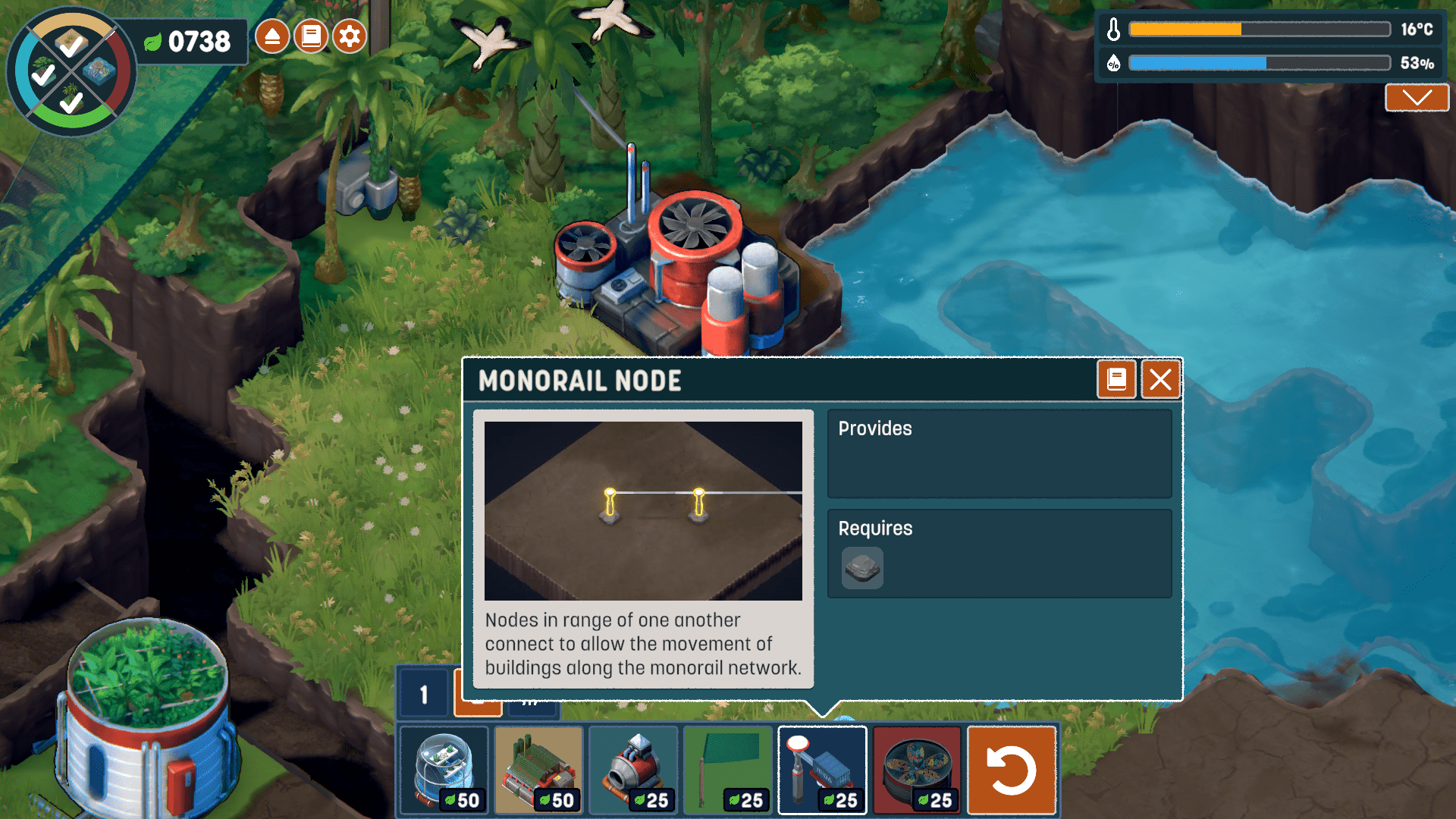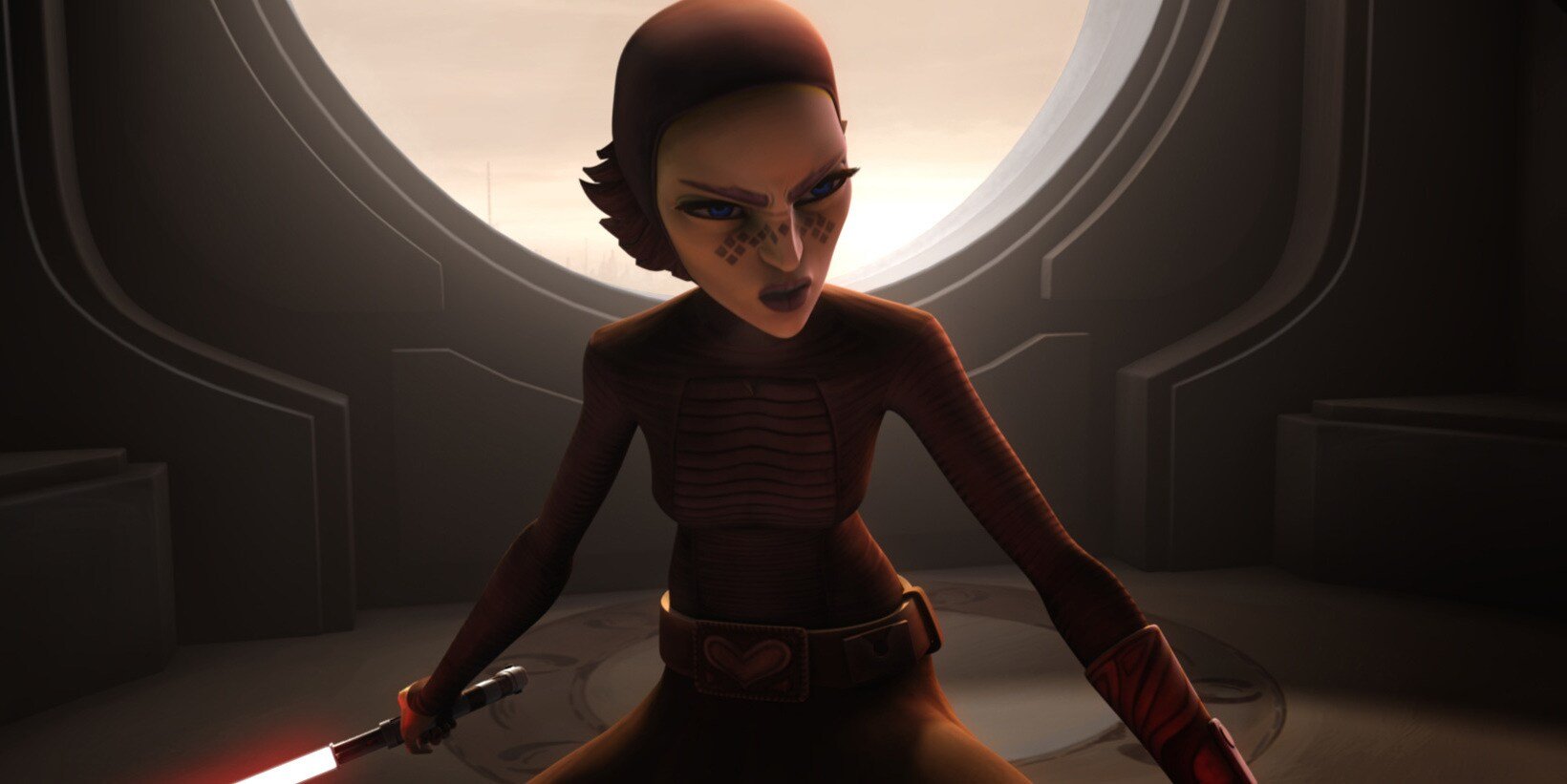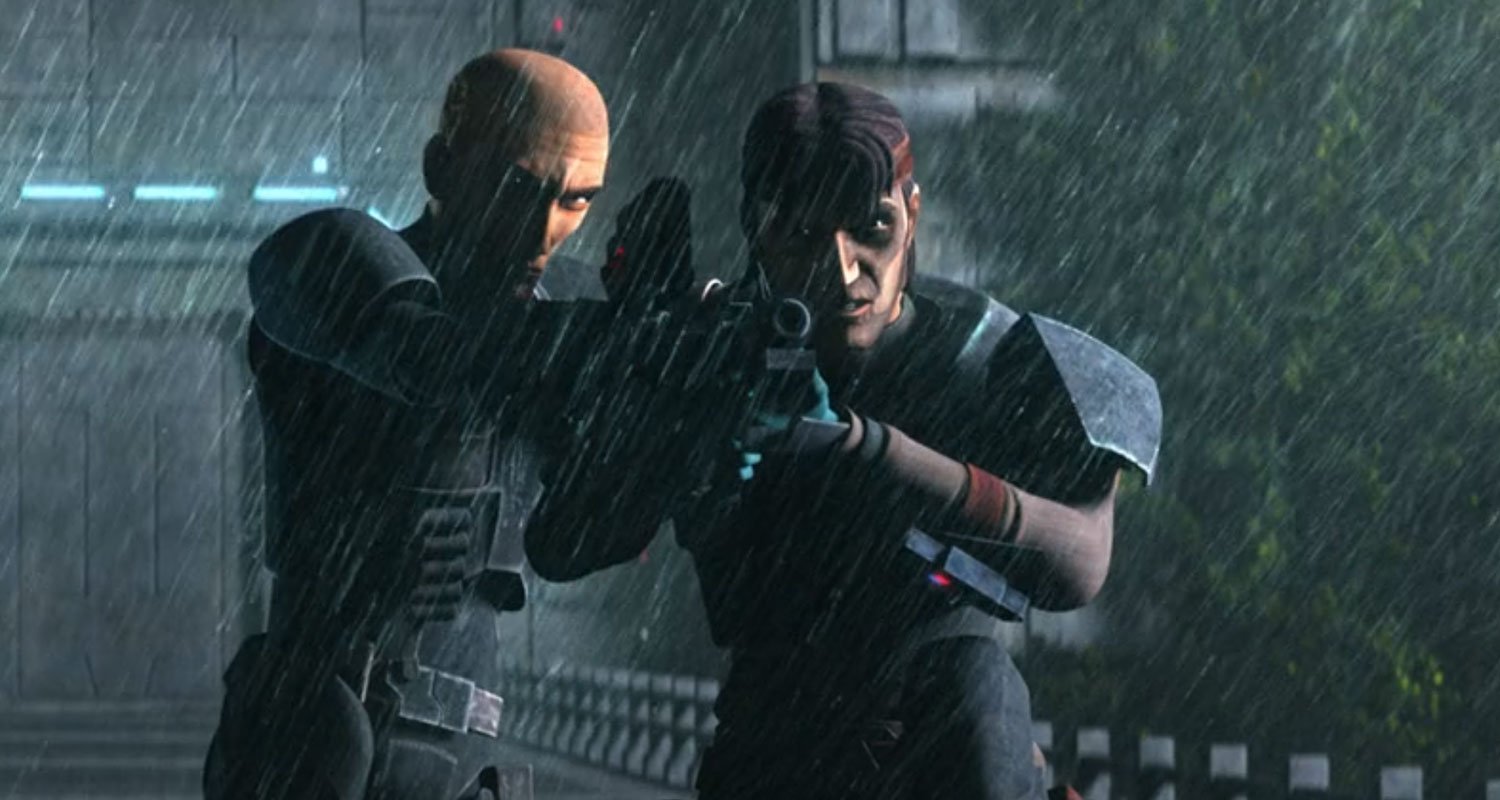‘Terra Nil’ Review: A Soothing Challenge
Described and marketed as a peaceful “environmental strategy game”, Terra Nil can be both chill and stressful. That’s a bit of a surprise, but not necessarily bad.
In recent years, we’ve seen Devolver Digital publish a wider variety of indie releases, from action-heavy love letters to retro sensations to refreshing takes on well-trodden genres. Terra Nil belongs to the latter group, yet it presents goals and exhibits characteristics that are anything but common. Moreover, its calm strategy-like surface hides a puzzle game that can often be challenging.
Terra Nil has been developed by Free Lives (Broforce, Genital Jousting), representing yet another major change in the studio’s varied output of games. It was designed with the intent of putting nature at the forefront and not having a human presence. In fact, the main goal is to “rebuild” thriving ecosystems thanks to “advanced eco-tech”, turning a barren Earth-like planet — which sports signs of previous human inhabitants — into a vibrant world.
Things start simple enough in the first region, allowing players to easily connect with the game’s basics and to trick themselves into thinking this is a light strategy title; get electricity up and running, purify the soil, make plants grow… The following stage of the process introduces the creation of advanced biomes with certain temperature and humidity requirements. Then, local animals must be identified to ensure the ecosystem is thriving. Once everything looks okay, the final step requires you to remove all the tech and buildings that have done the job, with a mothership sending out drones to carry out the tasks. It all sounds easy on paper, but things quickly become increasingly complex.
The (flexible) challenge comes from hitting the objectives without using too many “points” (look for the top-left leaf sign in the screenshots); while they can be produced by well-placed buildings and successful environmental transformations, they’ll generally go down as you fill the map with more and more eco-tech. You can always rewind your last move, but it’s game over in the current region if you run out of them. So, essentially, Terra Nil is more of a tile-based puzzle game that develops through a number of moves that can never be infinite.
Between the gorgeous isometric visuals and the tranquil soundtrack, it was reasonable to expect Terra Nil to be relatively easy, but that’s not what Free Lives had in mind. Very often, you’ll find yourself lacking the necessary points to progress, and it’s typically hard to figure out where and when everything went wrong, as the rewind only goes back “one turn” and the game doesn’t keep track of every move so you can check your progression over time. This wouldn’t be an issue if the game presented the entire list of objectives and requirements for any given region from the get-go, but alas…
You see, every new level introduces at least a handful of new mechanics and buildings that work in different ways, normally allowing more advanced eco-tech to do its job. The layers of “I need this to do that, but that needs another thing” quickly stack up, and this translates into buildings having to be placed in close proximity to other buildings they need without altering other areas of the map that might be ready to go. While the resulting layout changes naturally with each attempt, possibilities are limited, and as a result, so is the number of moves you can make. It all inevitably hits a wall when a later stage of a map reveals eco-tech and requirements you couldn’t possibly anticipate and take into account when placing the previous buildings, resulting in failed missions which are almost impossible to beat in the first try, since you lacked all the necessary information and can’t revert many of the profound changes made to the environments.
For a strategy-puzzle game that prides itself in its relaxing presentation and affable mechanics, the decision to render practical choices half-useless with late reveals sure seems like a bunch of artificial difficulty to make the (otherwise short) game run for a bit longer. If you want to do away with the point system altogether, the devs were nice enough to include a “zen mode” so you only have to worry about eco-tech placement and the irreversible alterations. And even then, you can lock yourself out of success because of the aforementioned “gotcha” reveals.
Clearing all four regions unlocks alternative levels with new challenges, but players shouldn’t expect an endless/creative mode — the folks at Free Lives were very clear about their intention of making and short and sweet game. After playing through the entire thing (and getting all the achievements), the absence of an endless mode is logical; as I said, it’s more of a puzzle game, and the “zen mode” is already flexible enough. But I think they should consider a fully creative mode that allows players to tinker with the tiles without having to “play” the game, just for aesthetic purposes. There’s potential there.
Despite my frustrations with how Free Lives decided to structure missions and withhold critical information required to make sensible choices early on — something that clashes with the rigid ruleset as soon as you leave the first region — I had a great time with Terra Nil once I got the full picture. It’s a compact experience that does something unique and packs a lovely audiovisual presentation capable of charming almost anyone.
However, I do think the marketing could’ve been clearer about the game’s true nature, as strategy fanatics will find little to dig up here. Looking at the crowded video game market right now, the $25 price tag also seems a bit steep for a relatively simple indie game that can be 100%’d in around 10 hours and has little replay value. Low-key hoping for post-launch content here.
Terra Nil launches tomorrow, March 28, on PC (Steam, Epic, and GOG) and mobile devices (via Netflix).
Thanks to Devolver Digital and Tinsley PR for the review code.
Francisco J. Ruiz is that guy who has watched Jurassic Park a thousand times and loves Star Wars. His hunger for movies is only matched by his love for video games. He graduated in English Studies from the University of Malaga, in Spain. As he keeps writing about what he enjoys (and doesn’t) for websites all over, he’s continuing his studies.

